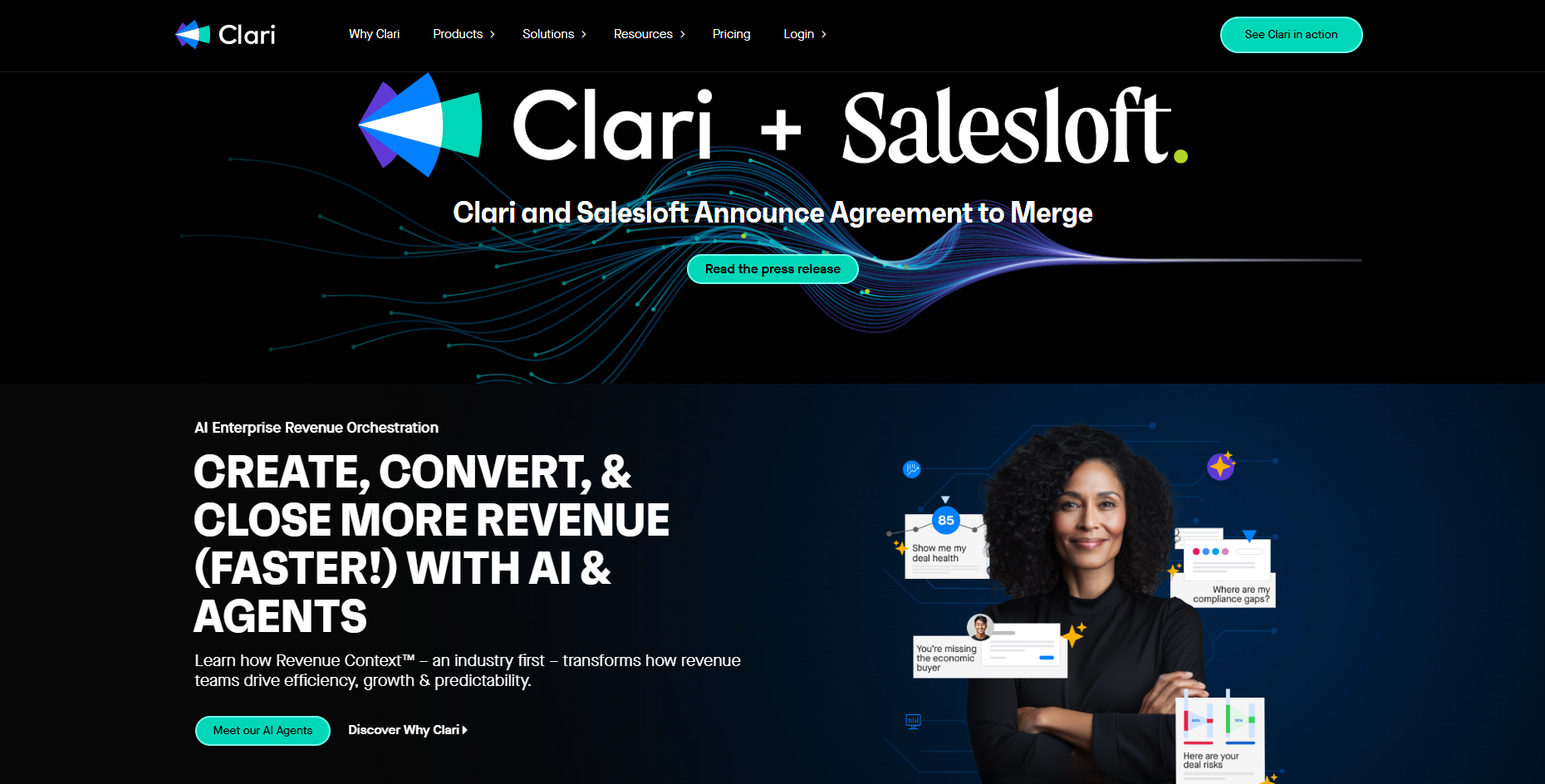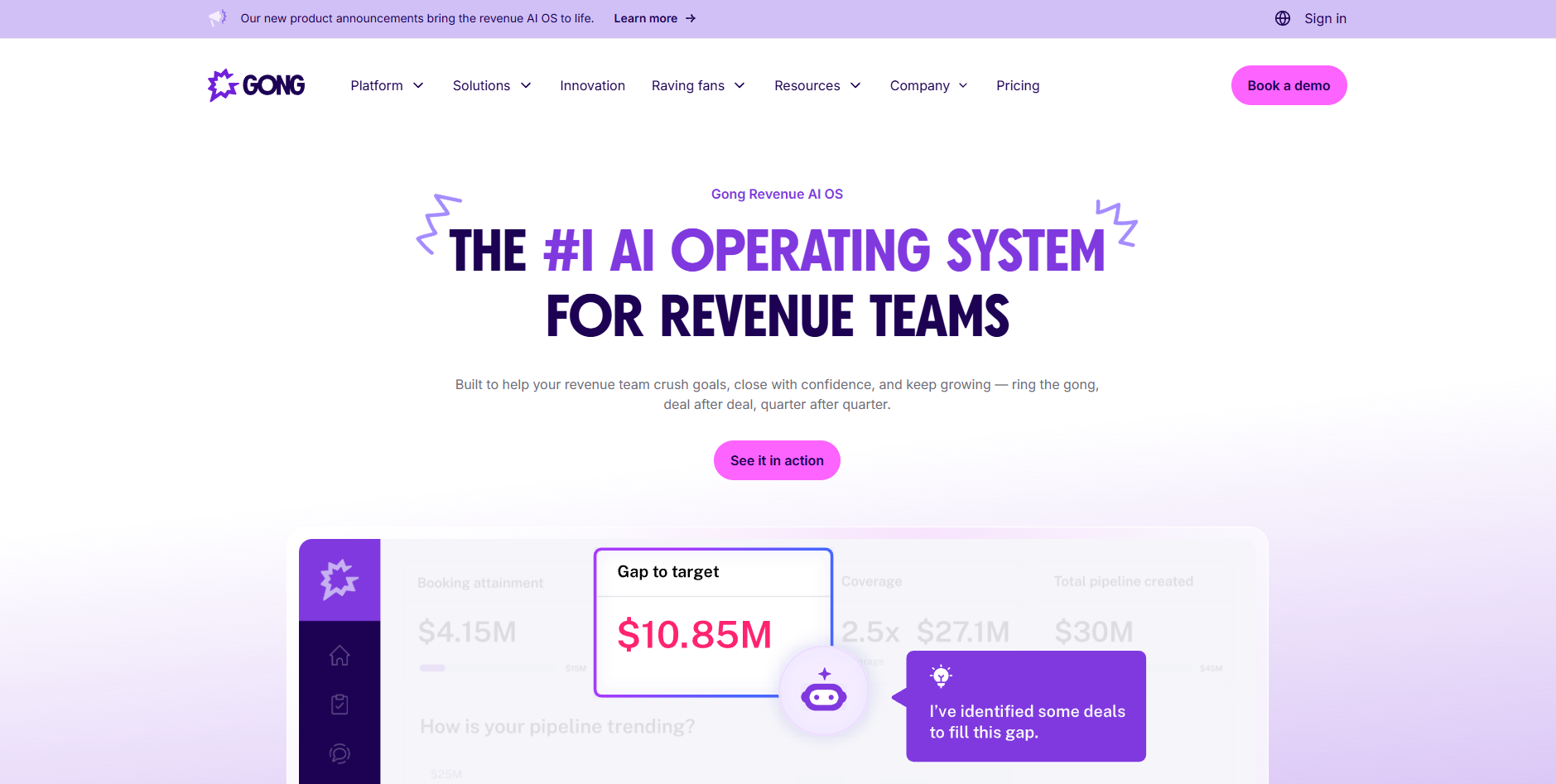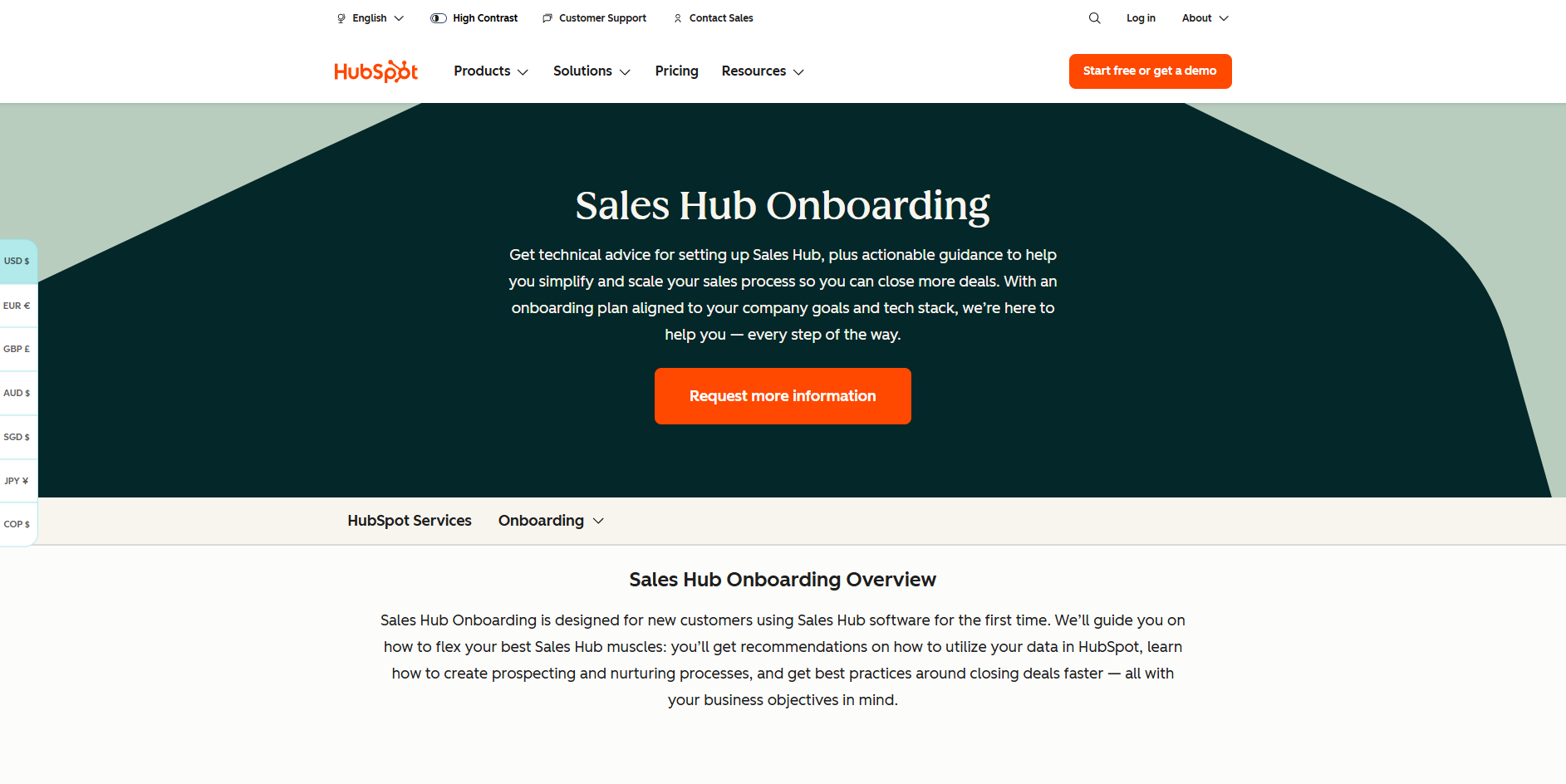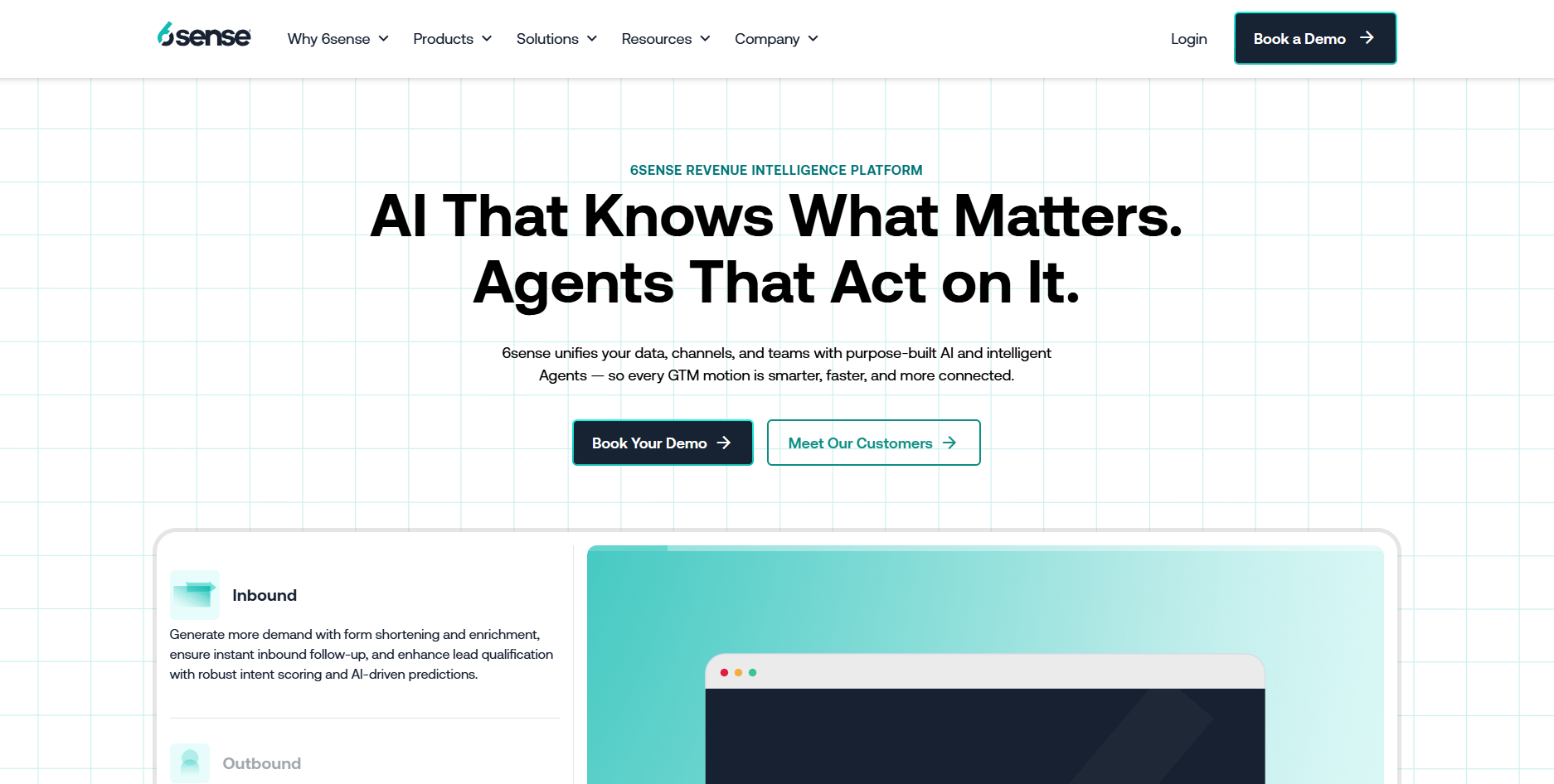AI for B2B SaaS Revenue Teams: Top 9 Tools, Use Cases, and Proven ROI
In this blog, we’ll break down the top AI tools for B2B SaaS revenue teams in 2025, comparing their standout features, pricing models, and best use cases.

Revenue leaders in SaaS face a hard truth: their teams spend more time on manual tasks than on revenue-generating activities. McKinsey estimates sellers spend less than 30% of their time with customers, the rest is lost to drafting emails, updating CRM fields, and creating proposals. For fast-growing B2B SaaS companies, these inefficiencies compound quickly, delaying pipeline velocity and reducing win rates.
This is where AI tools make a measurable difference. From automating prospect research to generating first-draft RFP responses, AI enables SaaS revenue teams to close deals faster, scale without adding headcount, and improve proposal accuracy.
In this blog, we’ll break down the top AI tools for B2B SaaS revenue teams in 2025, comparing their standout features, pricing models, and best use cases.
TL;DR - Key takeaways:
- AI tools span the whole revenue engine: prospecting and data, outreach and demos, forecasting and deal inspection, and proposal/RFP workflows.
- Time back to sell: tools that auto-draft emails, clean CRM, and surface next steps give reps more customer time.
- Quality > volume: context-aware tools raise conversion by tailoring messaging and proposals to what buyers actually value.
- Pick for fit: evaluate CRM fit, scalability, governance, and proof of ROI in your motion—not feature buzzwords.
- RFP automation (e.g., Inventive AI) is one high-impact lever among others; pair it with forecasting/inspection and outreach to lift win rates end-to-end.
What Are AI Tools for B2B SaaS Revenue Teams?
AI tools for B2B SaaS revenue teams are specialized platforms that apply artificial intelligence to sales, RevOps, presales, and proposal management workflows. Unlike generic productivity tools, these solutions are built to address challenges unique to SaaS revenue organizations, such as:
- High-velocity deal cycles where missed follow-ups can cost opportunities.
- Complex buying committees involving multiple technical, financial, and compliance stakeholders.
- High proposal volumes for RFPs, security questionnaires, and proof-of-concept documentation.
- Global competition where speed and differentiation directly impact win rates.
In plain terms, the best AI tools help revenue teams:
- Surface the most promising leads and opportunities.
- Automate drafting of proposals and RFP responses.
- Personalize outreach and demos at scale.
- Provide pipeline intelligence for more accurate forecasting.
For SaaS revenue leaders, the value is clear: shorter sales cycles, higher conversion rates, and scalable operations without expanding headcount.
Top 9 AI Tools for B2B SaaS Revenue Teams in 2025
Revenue teams in SaaS operate under pressure: closing more deals with fewer resources, while handling longer sales cycles and increasingly complex buyer journeys. AI tools have become central to this mission, offering automation, predictive analytics, and personalized engagement at scale.
Below, we break down the top AI tools revenue teams are using in 2025, covering their standout features, pricing, and use cases.
1. Inventive AI

Gartner Rating: 5/5
Inventive AI stands out as the most advanced AI-powered RFP and proposal automation platform purpose-built for SaaS revenue and presales teams. Unlike general AI writing tools, it combines context-aware generation, knowledge integrity, and strategic evaluator alignment, helping organizations respond to RFPs and security questionnaires 10× faster while maintaining 95%+ accuracy.
Built on proprietary AI RFP Agent™ technology, Inventive AI transforms every stage of the proposal lifecycle, from sourcing verified content to generating first drafts and ensuring evaluator-centric scoring alignment. The platform is trusted by leading SaaS and enterprise teams to cut response cycles by 90%, reduce compliance risk to zero, and achieve 50%+ higher win rates without expanding team size.
Key Benefits
- 10× Faster Draft Generation: Creates accurate first drafts in minutes using verified internal sources (Drive, SharePoint, Notion, Slack), so presales focuses on strategy—not boilerplate.
- Win Themes™ (corrected): Win themes come from your customers’ must-have outcomes—typically the 2–3 things they value most. Inventive AI helps capture those themes from discovery and buyer input, then weaves them consistently through answers, evidence, and proof, so evaluators see clear alignment.
- Context Engine: Reads discovery notes, deal context, and RFP language to produce drafts that reflect the buyer’s situation (not generic templates).
- AI Content Manager: Detects conflicting, duplicate, or outdated content and recommends the current, compliant version before submission.
- Unified Collaboration: Real-time reviews, SME assignments, and role-based controls keep legal, security, and sales in sync.
- Strategic AI Agents (reframed): Help teams anticipate how competitors might answer and suggest adjustments—positioning, evidence, and differentiators—so you can pre-empt and win more often.
- Pipeline Impact Analytics: Track response turnaround, reuse, and late-stage conversion to see where proposals gain or lose velocity.
Pros
- Contextually intelligent RFP automation that goes beyond text generation.
- Eliminates inconsistent or outdated content through AI-based content validation.
- Scales effortlessly for large SaaS enterprises and global teams.
- Seamless integrations with Salesforce, HubSpot, SharePoint, Notion, and Slack.
Cons
- Analytics features are basic and less customizable.
Pricing
Flexible usage-based pricing aligned with your organization’s RFP submission volume.
Best For:
The top choice for B2B SaaS revenue teams needing faster, more accurate, and evaluator-aligned RFP responses.
2. Clari

Gartner Rating: 4.7/5
Category: Revenue Forecasting and Pipeline Intelligence
Clari provides revenue forecasting and deal visibility for SaaS revenue teams. It consolidates sales activity, CRM data, and engagement signals to surface real-time insights on pipeline health and conversion likelihood.
Key Benefits
- AI-driven forecasting for revenue predictability
- Deal inspection tools to identify at-risk or stalled opportunities
- Pipeline coverage analysis and quota tracking
- Scenario modeling for best/worst case outcomes
- Native integrations with Salesforce and other CRMs
Pros
- Offers clear visibility into deal progress and pipeline accuracy
- Helps leaders identify gaps early in the revenue cycle
- Useful for coordinating between sales, presales, and RevOps functions
Cons
- Forecast accuracy depends heavily on disciplined CRM data hygiene
- Less suited for content-heavy proposal or presales workflows
- Limited ability to automate proposal or document creation
Pricing
Custom enterprise pricing based on user volume, pipeline complexity, and integration depth.
Best For
CROs, RevOps leaders, and enterprise SaaS teams seeking data-backed forecasting and risk detection to improve revenue predictability and decision-making.
3. Gong

Gartner Rating: 4.7/5
Category: Conversation Intelligence and Buyer Insights
Gong uses AI to analyze sales conversations, demos, and emails to identify buyer intent, sentiment, and deal risks. It provides visibility into how prospects respond, what objections surface, and how engagement patterns evolve throughout the sales cycle.
Key Benefits
- Automatic call recording and transcription
- Sentiment, tone, and objection detection
- Deal health and engagement dashboards
- AI coaching recommendations based on interaction data
- CRM and video conferencing integrations
Pros
- Centralized view of buyer interactions and risk factors
- Enables sales coaching using data from real conversations
- Supports consistent deal review and performance benchmarking
Cons
- Focused mainly on sales interaction analytics, not proposal workflows
- May generate large data volumes requiring clear process alignment
- Doesn’t provide capabilities to directly improve proposal quality or conversion rates.
Pricing
Available upon request; varies based on user count and analytics scope.
Best For
SaaS sales and presales teams using conversational data to refine messaging, improve coaching, and prioritize high-intent opportunities.
4. Overloop AI
.png)
Gartner Rating: N/A
Category: AI-Powered Sales Automation and Outreach
Overloop AI is a sales automation tool that helps B2B SaaS teams execute personalized, multi-channel outreach campaigns. It combines contact sourcing, personalization, and AI-generated email sequencing to improve outbound efficiency.
Key Benefits
- AI-driven outbound email generation at scale
- Automated multi-channel outreach (email, LinkedIn, calls)
- Audience segmentation and list filtering
- Deliverability optimization tools
- Native CRM integrations
Pros
- Simplifies outbound campaign management
- Automates repetitive sales engagement workflows
- Integrates with existing CRMs and outreach stacks
Cons
- Focused primarily on outreach, with limited analytics depth
- Not suited for post-lead proposal or presales stages
- Doesn’t offer proposal automation or deal-specific content generation
Pricing
Credit-based pricing model with multiple tiers; customized demos available.
Best For
Outbound-focused SaaS teams seeking to scale personalized email and multi-channel outreach using AI-generated messaging.
5. Salesforce Sales Cloud (Einstein Copilot)
.png)
Gartner Rating: 4.3/5
Category: CRM and AI-Driven Sales Productivity
Salesforce Sales Cloud extends traditional CRM functionality with Einstein Copilot, an AI assistant that enhances data accuracy, forecasting, and workflow automation within the Salesforce ecosystem. It streamlines lead management and helps revenue teams engage prospects more efficiently without leaving the CRM.
Key Benefits
- AI Copilot for predictive insights and deal recommendations
- Automated data entry and CRM field updates
- Lead and opportunity scoring based on activity signals
- AI-generated sales emails and follow-up suggestions
- Forecast modeling and pipeline visibility
Pros
- Native AI integration within Salesforce workflows
- Reduces manual CRM maintenance for sales reps
- Supports scalable forecasting for multi-region SaaS teams
Cons
- Limited functionality outside Salesforce environment
- Accuracy depends on CRM data quality and adoption discipline
- Lacks AI-powered proposal creation and evaluator alignment features
Pricing
Tiered subscription model across Starter, Professional, Enterprise, and Unlimited editions; advanced AI capabilities are available as add-ons.
Best For
SaaS teams already operating on Salesforce who need embedded AI automation for daily sales management and forecasting.
6. HubSpot Sales Hub

Gartner Rating: 4.4/5
Category: Sales CRM and Predictive Lead Scoring
HubSpot Sales Hub combines CRM automation with AI-driven insights for managing leads and pipeline performance. It supports predictive lead scoring, engagement automation, and sales forecasting within the HubSpot ecosystem.
Key Benefits
- Predictive lead scoring and opportunity prioritization
- AI-generated sales email personalization
- Workflow automation and task reminders
- Deal tracking and pipeline dashboards
- Integration with HubSpot Marketing and Service Hubs
Pros
- Centralized CRM for marketing and sales alignment
- Easy-to-use interface for small to mid-market SaaS teams
- Built-in automation for follow-ups and notifications
Cons
- Limited depth in complex enterprise forecasting
- Predictive accuracy varies by data completeness
Pricing
Available in Starter ($15/user/month), Professional ($90/user/month), and Enterprise ($150/user/month) plans, with predictive lead scoring included in higher tiers.
Best For
Growth-stage SaaS organizations that prioritize inbound sales and need AI support for lead prioritization and pipeline management.
7. Cognism

Gartner Rating: 4.4/5
Category: B2B Data Intelligence and Prospecting
Cognism provides a GDPR-compliant global database enhanced with AI to identify in-market accounts, enrich contact data, and prioritize leads based on buyer intent signals. It supports top-of-funnel pipeline building for B2B SaaS teams.
Key Benefits
- Verified, compliant B2B contact data (email and direct dial)
- Intent data for identifying active prospects
- Chrome extension for real-time contact discovery
- AI-driven lead scoring and prioritization
- Integration with Salesforce, HubSpot, and Outreach
Pros
- Accurate and compliant data for prospecting
- Reduces wasted outreach on unqualified leads
- Integrates smoothly with popular CRM and engagement tools
Cons
- Focused on data enrichment, not full sales cycle management
- Limited analytics and reporting depth compared to revenue platforms
- Lacks proposal generation and content optimization features
Pricing
Custom subscription-based pricing based on data volume and region coverage.
Best For
B2B SaaS revenue teams seeking reliable, compliant prospect data and intent signals to improve lead quality and accelerate top-of-funnel engagement.
8. 6sense

Gartner Rating: 4.4/5
Category: Predictive Intelligence and Account-Based Marketing (ABM)
6sense applies AI-driven predictive modeling to identify in-market accounts and prioritize outreach across buying groups. By analyzing keyword intent data, web activity, and CRM history, it helps SaaS revenue teams focus their engagement on accounts most likely to convert.
Key Benefits
- AI-based buying stage prediction and account prioritization
- Intent data capture from first- and third-party sources
- Account and persona-level engagement tracking
- Integration with Salesforce, HubSpot, Outreach, and Marketo
- Dashboards for pipeline influence and revenue attribution
Pros
- Provides early visibility into accounts researching your solution
- Helps SDRs and AEs prioritize high-intent targets
- Supports marketing and sales alignment through shared ABM data
Cons
- Requires integration maturity for best performance
- Limited usability for teams not practicing ABM-based selling
- AI predictions are limited to account prioritization, without actionable insights for proposal quality.
Pricing
Custom enterprise pricing, typically based on the number of tracked accounts and integrations required.
Best For
Mid-market and enterprise SaaS revenue teams using ABM strategies to identify, prioritize, and engage accounts earlier in the buying journey.
9. Dealfront

Gartner Rating: 4.2/5
Category: Pipeline Generation and Buyer Intent Analytics
Dealfront identifies website visitors, interprets intent signals, and enriches account data to surface new sales opportunities. It bridges the gap between marketing and sales by showing revenue teams which companies are actively researching their solutions.
Key Benefits
- Website visitor identification and intent tracking
- Account enrichment with verified contact details
- GDPR-compliant data collection and processing
- Buyer behavior analytics for engagement prioritization
- CRM and marketing automation integrations
Pros
- Uncovers hidden opportunities before prospects fill out forms
- Helps marketing and sales teams coordinate around active accounts
- Maintains compliance with EU and international data standards
Cons
- Focused on early-funnel visibility; limited deal management features
- May require cross-functional adoption for full impact
- May require extensive customization to align with sales processes beyond pipeline generation
Pricing
Subscription-based pricing model with plans suited for SMBs to large B2B revenue teams.
Best For
B2B SaaS teams looking to identify anonymous web visitors and uncover active buying intent signals to drive pipeline growth.
Related:
How to Choose the Right AI Tools for SaaS Revenue Teams
The SaaS sales cycle is unique: fast-paced, multi-stakeholder, and increasingly compliance-heavy. Selecting AI tools for revenue teams isn’t about chasing flashy features; it’s about aligning technology with real business needs and measurable ROI. Decision-makers should prioritize four non-negotiable factors:

1. Integration with CRM & Proposal Systems
Revenue teams live inside Salesforce, HubSpot, or Dynamics. If an AI tool requires users to switch platforms, adoption will stall. Best-in-class solutions embed directly into CRMs and proposal platforms, surfacing insights where the team already works.
Example: Clari integrates natively with Salesforce for forecasting, while Inventive AI syncs with SharePoint and Slack, ensuring information flows seamlessly across teams.
2. Scalability with SaaS Growth
As SaaS companies expand, proposal volume and pipeline complexity grow exponentially. AI tools must handle spikes in deal flow, global workflows, and multi-product structures without performance drops. Scalable solutions support multi-region deployments, role-based access, and collaboration via Slack or Teams, keeping distributed revenue teams aligned.
3. Security & Data Governance
Proposal data is sensitive from customer pricing to compliance responses. Gartner highlights data governance as a top enterprise buying criterion for AI adoption. The right tools enforce role-based permissions, encryption standards, audit logs, and SOC 2 compliance.
4. Measurable ROI
Executives demand numbers, not promises. Vendors should demonstrate impact in terms of:
- Up to 90% faster proposal cycles (10× faster drafting).
- 95%+ content accuracy with zero hallucinations.
- Up to 50% higher win rates through evaluator alignment.
- Time saved for SMEs who spend less time on boilerplate drafting and more on strategic deal contributions.
When evaluating platforms, revenue leaders should demand case studies and verifiable performance data. For example, Inventive AI’s case studies showcase customers reducing RFP response times by 90% and lifting win rates by over 50%.
Also read: Creating Effective Proposal Win Themes
Conclusion
For SaaS revenue teams, AI has moved beyond a buzzword; it’s now a measurable driver of growth. From accelerating RFP responses to enabling more accurate, competitive proposals, AI tools are solving the very bottlenecks that slow down enterprise SaaS deals.
But not all AI platforms are created equal. Generic tools may speed up drafting, but they fall short on accuracy, evaluator alignment, and compliance, areas where SaaS revenue teams cannot afford mistakes. That’s where Inventive AI stands apart: delivering 10× faster first drafts, 95% accuracy with 0% hallucination, and up to 50% higher win rates by aligning directly with evaluator scoring rubrics.
If your SaaS team is under pressure to handle more proposals, close bigger enterprise deals, and scale without adding headcount, now is the time to adopt a purpose-built AI solution.
Here’s what our customers say:
"Inventive AI has completely changed how we handle RFPs. Our presales team now saves hours on every response, and accuracy has gone way up. We’ve seen a noticeable lift in win rates within months."
— Verified G2 reviewer, Solutions Engineering team
Frequently Asked Questions (FAQs)
1. How do AI tools help SaaS revenue teams?
AI tools automate repetitive tasks like drafting proposals, retrieving technical content, and formatting RFP responses. This allows SaaS revenue teams to focus on higher-value activities, tailoring solutions to client needs and aligning with buyer evaluation criteria.
2. What’s the difference between AI for SaaS sales vs generic sales tools?
Generic AI sales tools focus on prospecting or outreach. In contrast, SaaS-specific AI platforms (like Inventive AI) address the technical and compliance-heavy parts of the sales cycle, such as RFPs, security questionnaires, and proposal automation.
3. Which AI tools improve SaaS proposal workflows?
Tools like Inventive AI (proposal automation), Clari (forecasting and pipeline visibility), and Gong (conversation intelligence) improve SaaS proposal workflows by reducing manual drafting, providing buyer insights, and ensuring accuracy across all submissions.
4. How quickly can SaaS teams see ROI from AI adoption?
Most SaaS teams report tangible ROI within the first 3–6 months, driven by faster response cycles and improved win rates. For teams with high proposal volumes, savings are visible even sooner.
5. Is it safe to use AI for SaaS revenue operations?
Yes - as long as the platform is enterprise-ready. Inventive AI, for example, uses role-based access controls, audit trails, and private data storage to ensure sensitive proposal content never leaves secure systems. Unlike generic AI models, it never pulls from the open web, eliminating hallucination risks.


